Role of Data Communication Modules (DCM) in Security Systems
2024-07-26
445
Catalog

Figure 1: Data Communication Modules (DCM)
What Is DCM?
The Data Communication Module (DCM) is an on-board device that integrates smoothly with larger communication systems. Its main role is to manage data exchanges between a vehicle's internal network & external systems. This integration supports various vehicle functions, from basic telemetry to advanced driver-assistance systems (ADAS). The DCM has strong processing capabilities, allowing it to handle large amounts of data efficiently. This power supports complex encryption protocols & real-time data analytics and ensure data integrity & security.
Data Communication Modules (DCM) one feature is its one-touch connectivity, which uses Near Field Communication (NFC) or Bluetooth technology to establish a secure connection without manual user setup. This is useful in time-sensitive or safety-critical situations, like emergency vehicle responses or real-time navigation updates. The one-touch system is designed to maintain reliable connectivity even in areas with unstable network coverage.
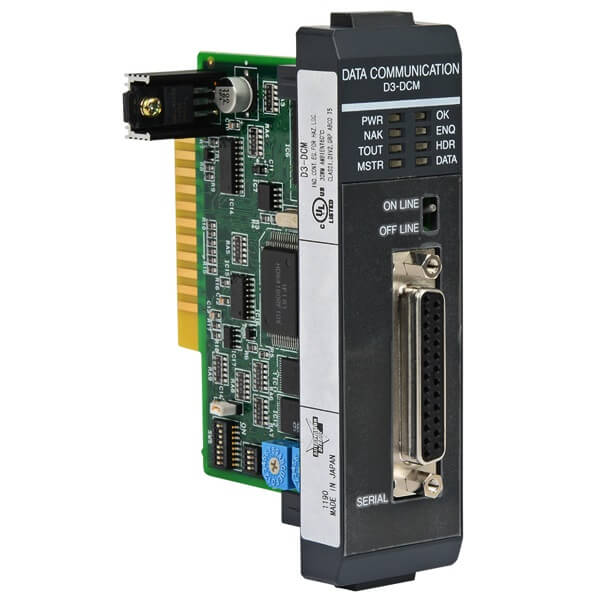
Figure 2: Data Communication Modules
The DCM's resilience in maintaining communication is shown by its automatic reconnection feature. This is useful in mobile environments where interruptions are common. The module uses advanced algorithms to detect lost connections & immediately attempts to reconnect. These algorithms consider factors like signal strength, availability of alternative network paths, & traffic prioritization to optimize reconnection. Quickly restoring connectivity minimizes the impact on the system’s functionality & user experience & improve the overall reliability of the vehicle’s communication network.
Key Components of DCM
Transceiver
The transceiver is central to the Data Communication Modules (DCM) function. It handles data signals by converting digital signals into analog for transmission & analog signals back into digital for processing. This conversion guarantees data integrity during transmission & reception & reduce errors & distortions.
Processor
The processor acts as the central processing unit of the Data Communication Modules (DCM). It executes communication protocols & managing interactions between the DCM's components & the network. It processes incoming & outgoing data, manages network traffic, & coordinates tasks among the module's components. Modern processors are powerful, supporting complex algorithms for security, data routing, & error correction. Thus, improve the communication system's throughput & reliability.
Memory
Memory in a Data Communication Modules (DCM) serves multiple purposes: storing the module's firmware, buffering data, & logging system operations. This is important for handling large data volumes & maintaining high performance during peak usage. Advanced memory solutions, such as non-volatile memory technologies, optimize data integrity & access speeds, guaranteeing the module's responsiveness & stability.
Interface Ports
Interface ports on a Data Communication Modules (DCM) provide connection points to other network devices & systems. These ports must be versatile & reliable, supporting various connections like Ethernet for network access, USB for peripherals, & optical ports for high-speed data transfer. Their design determines the DCM’s compatibility with different network architectures & its ease of integration into existing systems.
Power Supply
The power supply unit (PSU) in a Data Communication Modules (DCM) ensures all components receive the necessary power to function optimally. Modern PSUs are efficient & resilient, often incorporating power redundancy & protection against voltage spikes and fluctuations.
Modulation and Demodulation Circuitry
This circuitry modulates digital data onto carrier waves for transmission & demodulates received signals to extract digital data. The efficiency of these circuits impacts data throughput & integrity, as they must accurately translate data to & from its transmitted form without errors. Advanced modulation techniques, like quadrature amplitude modulation (QAM), increase data rates within available bandwidths. Thus, enhance the Data Communication Modules DCM's communication capabilities.
Signal Conditioning Hardware
Signal conditioning hardware includes amplifiers, filters, & other components necessary to prepare signals for transmission or refine received signals. This hardware helps in maintaining data signal quality & integrity, especially over long distances or in high electromagnetic interference environments. Effective signal conditioning makes sure high-quality communication even under adverse conditions.
Network Management Software
Network management software in a Data Communication Modules (DCM) is used for setting up, monitoring, & managing operations. It allows network administrators to configure addresses, manage data routes, and troubleshoot issues efficiently. Advanced software often includes automatic network optimization & predictive maintenance features.
Security Features
Security features in a DCM include robust encryption protocols, secure boot mechanisms, & access control systems to protect against unauthorized access & data breaches. These features guarantee the confidentiality & security of all transmitted & received data. Advanced security implementations also monitor for anomalies & potential threats in real-time and provide proactive network protection.
How DCM Works?
When powered on, the Data Communication Modules (DCM) performs a thorough self-check to identify any operational issues. This step ensures all hardware & software components are functioning correctly. Once verified, the DCM loads its firmware that includes important protocols & configurations like network parameters (IP addresses & security settings). These can be pre-configured or dynamically assigned via DHCP, ensuring smooth network integration & readiness for tasks.
The Data Communication Modules (DCM)'s main job is to manage & process data. It receives various signals, from simple digital inputs to complex analog signals from sensors or network nodes. The module converts analog signals to digital for easier processing & temporary storage & maintain data integrity and accuracy. During high network traffic, the module’s memory helps manage data flow, preventing loss & ensuring continuous operation. The processor coordinates these activities, managing data throughput & preparing it for transmission.
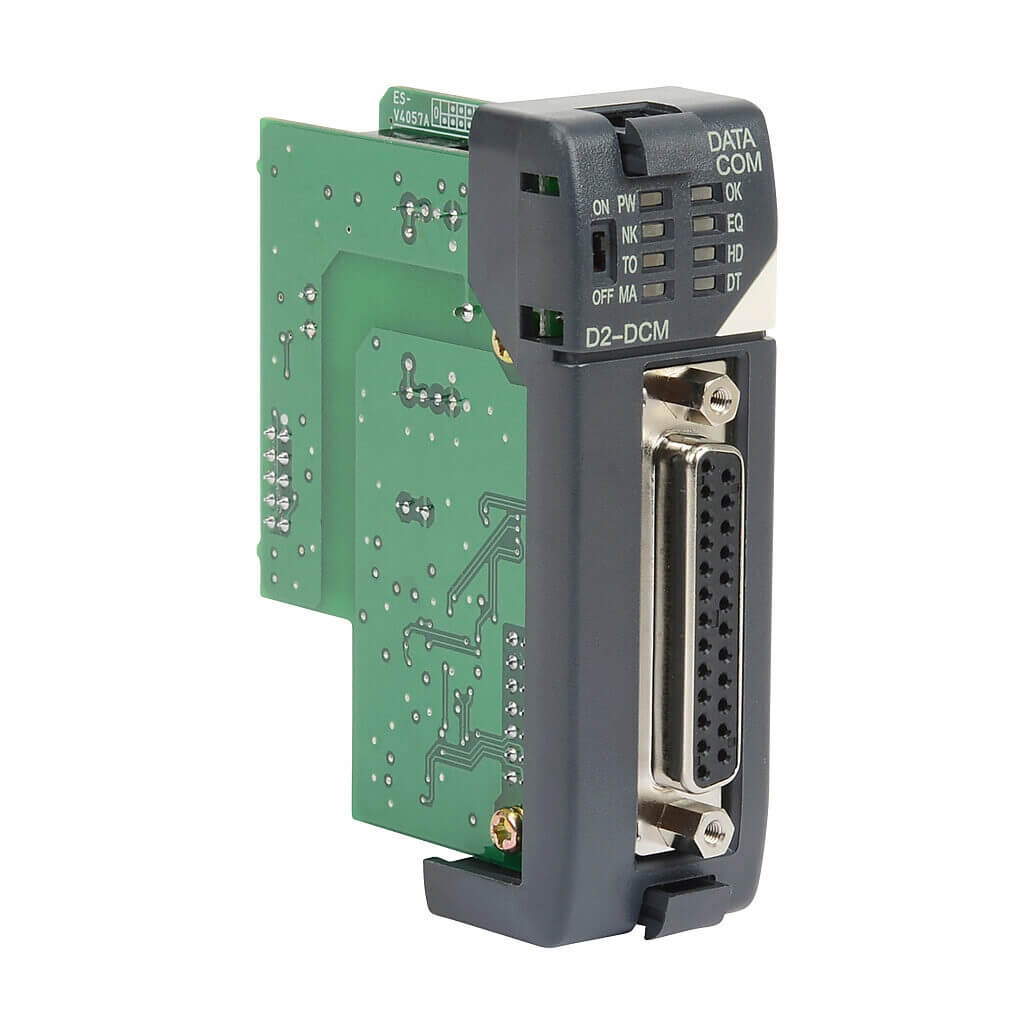
Figure 3: Data Communication Modules
Data transmission in a Data Communication Modules (DCM) is well-structured. The module formats data into packets or frames, adding headers & error-checking codes as per communication protocols. This preparation is needed for the data's network journey. After formatting, the data is modulated to match the transmission medium, whether fiber optic, wireless, or copper cabling to ensure efficient & error-free delivery.
DCMs follow strict protocols for packaging, addressing, & routing data across the network. These protocols help maintaining data integrity, facilitating error correction, & securing transmissions. The Data Communication Modules (DCM)’s compliance with these protocols ensures reliable & secure communication. Plus, the module includes advanced network management tools for ongoing adjustments, monitoring, & quick troubleshooting.
Security is also important in Data Communication Modules (DCM) operations. The modules use advanced encryption & authentication protocols to protect data transmissions & prevent unauthorized access. They also have error-detection features like cyclic redundancy checks to identify & correct transmission errors. These capabilities ensure the DCM can manage data retransmissions or recovery as needed.
Types of DCM
Wired Communication Modules - Wired Communication Modules are utilized for networks needing high reliability & secure data handling. These modules use physical media like copper wires for Ethernet (supporting both data & power via Power over Ethernet), coaxial cables for broadband, & fiber optic cables for backhaul communications due to their large data capacity & resistance to electromagnetic interference. They are favorable in environments requiring robust data integrity & speed, such as data centers & financial institutions. Advanced error-checking & data compression algorithms improve reliability.
Wireless Communication Modules - Wireless Communication Modules offer crucial data transmission without physical connections, using technologies like radio frequencies for Wi-Fi, microwaves for telecommunications, & infrared for remote controls. These modules are used in applications such as smart home systems, portable internet devices, & the Internet of Things (IoT). They support various standards & frequencies, from 2.4 GHz for Bluetooth and Wi-Fi to 5 GHz for higher data rates & less interference.
RFID (Radio Frequency Identification) Modules - RFID Modules specialize in identification & tracking using radio waves. They include an RFID reader & antennas to communicate with RFID tags that can be passive (no power source) or active (battery-powered for longer range & more memory). This technology is required for automated inventory systems, supply chain management, & personal identification applications. It operates effectively over short to medium distances.
Cellular Communication Modules - Cellular Communication Modules connect devices to cellular networks, from 2G to the latest 5G that offers high data rates & low latency. These modules are used where broad geographic coverage & mobility are needed, such as in fleet management, emergency response vehicles, & extensive IoT applications. They come with SIM card interfaces & support various network protocols to ensure seamless connectivity across different cellular networks worldwide.
Satellite Communication Modules - Satellite Communication Modules are used for communication in remote or globally distributed areas. They use geostationary or low-earth-orbit satellites to transmit data over long distances - required for maritime communications, remote rural communications, & global broadcasting. These modules handle high latency & variable signal conditions typical of satellite communications. It uses advanced modulation and error correction techniques to guarantee reliable data transmission.
Optical Communication Modules - Optical Communication Modules transmit data using light through fiber optic cables & support extremely high data rates with minimal loss over long distances. These modules are important for backbone internet infrastructure & data centers where vast amounts of data need rapid transmission. Technologies like wavelength-division multiplexing (WDM) improve capacity by sending multiple light beams at different wavelengths through the same fiber - significantly multiplying data rates.
Applications of DCM
Telecommunications
DCMs are used in telecommunications to manage data flow across networks to enable high-speed broadband, VoIP, and video conferencing. They optimize data packet handling for efficient, uninterrupted delivery, for real-time communication. Data Communication Modules (DCM) also manage network traffic, implement quality of service (QoS) protocols, & enable scalable bandwidth.
Industrial Automation
In industrial automation, DCMs increase machine-to-machine (M2M) communication for real-time control & monitoring of machinery and systems. They integrate IoT technologies for smart manufacturing, enabling predictive maintenance, real-time analytics, & remote management. Data Communication Modules (DCM) support advanced robotics and automated assembly lines & ensure seamless communication in complex industrial environments.
Consumer Electronics
DCMs are embedded in devices like smartphones, tablets, & smart wearables to provide necessary connectivity. They enable wireless network access, support GPS for location-based services, & connect with other devices via Bluetooth or NFC. In consumer electronics, DCMs enhance device interoperability, support streaming services, & enable smart home integrations. It enriches user experience with high connectivity.
Automotive Systems
DCMs improve vehicle communications for autonomous driving, telematics, & infotainment systems. They enable vehicle-to-vehicle (V2V) & vehicle-to-infrastructure (V2I) communications, enhancing road safety and traffic management. DCMs support emergency response features, real-time diagnostics, & over-the-air updates to elevate safety & convenience in automotive systems. Continuous DCM functionality for autonomous driving, ensure constant communication with satellites, infrastructure, & other vehicles for safe navigation.
Healthcare
In healthcare, DCMs are used for telemedicine & patient monitoring. It enables real-time transmission of critical data. They facilitate remote diagnostics, patient tracking, & integration of medical device to enhance healthcare access & patient outcomes. DCMs support continuous monitoring & data-driven care strategies, necessary in underserved regions.
Smart Cities
DCMs enable smart city infrastructure by integrating systems like traffic management, public transportation, & safety surveillance. They connect IoT sensors & cameras to centralized platforms, optimizing resource use, enhancing safety, & supporting sustainable development. Data Communication Modules (DCM) transform urban areas into efficient, adaptive environments.
Energy Sector
In the energy sector, DCMs monitor & manage energy distribution and smart grids. They balance energy loads, integrate renewable sources, & optimize grid operations. This functionality supports the transition to sustainable energy systems. It ensures stability, efficiency, & reliability in power distribution to meet modern energy demands.
Security Systems
DCMs enhance security systems. It transmits surveillance data & alarm signals in real-time. They improve access control and monitoring systems & enable centralized security management & rapid response. Data Communication Modules (DCM) guarantee reliable, secure transmission of security data & support advanced surveillance and enhanced protection for facilities & public areas.
Environmental Monitoring
DCMs collect & transmit data from sensors monitoring air and water quality & weather conditions. This information helps environmental agencies assess environmental health, predict weather, and implement conservation & disaster response initiatives.
Agriculture
In agriculture, DCMs facilitate precision farming by linking sensors & farm management systems. They collect & analyze real-time data on soil moisture, crop health, & environmental conditions. That aids farmers in decision-making. This technology increase productivity, optimizes resource use, & improves crop yields. It supports sustainable farming practices with precise data to minimize waste and maximize output.
Conclusion
Looking into Data Communication Modules (DCM) shows us how vital they are in today's tech-driven world. By handling data well & safely, DCMs improve how devices connect and work in cars, electronic gadgets, & more. With features like getting back online automatically & strong security, DCMs are reliable for important communications in changing settings. As technology moves forward, using DCMs wisely in different fields shows their ability to bring new solutions, make operations smoother, & support eco-friendly practices in our digital age.
Frequently Asked Questions [FAQ]
1. How do DCMs work with older systems in vehicles and other technologies?
DCMs integrate modern technologies like NFC & Bluetooth while remaining compatible with older systems. They utilize specific protocols to connect with outdated technologies. Thus, enhance data handling & security within these older frameworks.
2. Can DCMs operate in extreme environmental conditions?
Yes, DCMs are designed to withstand harsh conditions, including extreme temperatures, high humidity, & electrical interference. They feature protective components & casings that ensure reliable performance regardless of the environment.
3. What maintenance do DCMs need?
DCMs require minimal maintenance due to their solid-state design & self-checking features. Regular software updates & occasional hardware checks help maintain optimal performance.
4. How do DCMs protect data privacy and security in sensitive applications?
DCMs secure data with strong encryption, secure boot processes, & controlled access systems. These measures are important in fields like healthcare & finance, ensuring compliance with strict privacy regulations & safeguarding sensitive information.
5. How do DCMs affect the energy efficiency of the systems they're part of?
DCMs improve system energy efficiency by optimizing data transmission & reducing unnecessary communications. They incorporate energy-saving components and management techniques to maintain low power consumption while ensuring high performance.
 ABOUT US
Customer satisfaction every time. Mutual trust and common interests.
ABOUT US
Customer satisfaction every time. Mutual trust and common interests.
function test. The highest cost-effective products and the best service is our eternal commitment.
Hot Article
- Are CR2032 and CR2016 Interchangeable
- CR2016 vs. CR2032 What’s the difference
- Relay Installation and Testing, Interpretation of Relay Wiring Diagrams
- Lithium Manganese Round Batteries: CR2450 vs CR2032
- MOSFET: Definition, Working Principle and Selection
- CR2032 VS DL2032 VS CR2025 Comparison Guide
- esp32 vs stm32: which microcontroller is better for you?
- Can I Use CR2025 to Replace CR2016
- LM358 Dual Operational Amplifier Comprehensive Guide: Pinouts, Circuit Diagrams, Equivalents, Useful Examples
- LM324 Operational Amplifiers: Pinouts, Application Examples, Size Packages, Datasheets
 Understanding the Complexity and Design of Large-Scale Integrated Circuits (LSICs)
Understanding the Complexity and Design of Large-Scale Integrated Circuits (LSICs)
2024-07-26
 Developing Testing Efficiency with Computer-Aided Tools
Developing Testing Efficiency with Computer-Aided Tools
2024-07-25
Hot Part Number
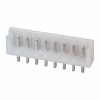 B8B-EH-A(LF)(SN)
B8B-EH-A(LF)(SN)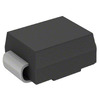 B340LB-13-F
B340LB-13-F SI7623DN-T1-GE3
SI7623DN-T1-GE3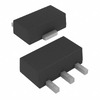 VP2450N8-G
VP2450N8-G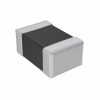 MLZ2012N6R8LT000
MLZ2012N6R8LT000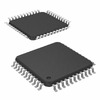 EPM3064ATC44-10
EPM3064ATC44-10 CY62128EV30LL-45ZXI
CY62128EV30LL-45ZXI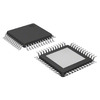 A3931KJPTR-T
A3931KJPTR-T PVG5A103C03B00
PVG5A103C03B00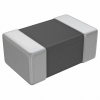 MPZ2012S101AT000
MPZ2012S101AT000
- MAX761ESA
- SI8621EC-B-ISR
- ISPPAC-POWR1220AT8-02TN100I
- S-1112B15MC-L6ATFG
- BMI160
- V300C28T150BL2
- P2HM755HA2
- SKIIP36NAB126V1
- UM150CDY-10
- STM32F207IGT7
- FQD7P06TM
- STGF3NC120HD
- ADF4110BRUZ
- ADM3232EARUZ
- TMS320VC5502PGF300
- DLPC3437CZEZ
- XC2VP20-5FG676I
- T1635T-8I
- AD8629ARZ-REEL7
- L7805ACD2T-TR
- CSD18514Q5A
- ULN2003ADR
- AM26LS29PC
- AN8026
- BTS5235G
- IDT72V255LA15TF
- IP4856CX25/C
- LM2594MX-5.0
- LTC1286CN8
- LTC3703EGN
- MBRB745HE3
- SAF-C167CS-LM
- KTD2058-Y-U/P
- 2MBI200U4B-120-54
- MN864788
- PT7616
- BH3P-VH-1(LF)(SN)
- 74HC4511M
- 8P34S1204NLGI/W